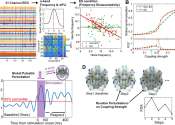Pain, in the sense of physical pain, is a typical sensory experience that may be described as the unpleasant awareness of a noxious stimulus or bodily harm. Individuals experience pain by various daily hurts and aches, and sometimes through more serious injuries or illnesses. For scientific and clinical purposes, pain is defined by the International Association for the Study of Pain (IASP) as "an unpleasant sensory and emotional experience associated with actual or potential tissue damage, or described in terms of such damage".
In medicine, pain is considered as highly subjective. A definition that is widely used in nursing was first given as early as 1968 by Margo McCaffery: "Pain is whatever the experiencing person says it is, existing whenever he says it does". Pain of any type is the most common reason for physician consultation in the United States, prompting half of all Americans to seek medical care annually. It is a major symptom in many medical conditions, significantly interfering with a person's quality of life and general functioning. Diagnosis is based on characterizing pain in various ways, according to duration, intensity, type (dull, burning, throbbing or stabbing), source, or location in body. Usually pain stops without treatment or responds to simple measures such as resting or taking an analgesic, and it is then called ‘acute’ pain. But it may also become intractable and develop into a condition called chronic pain, in which pain is no longer considered a symptom but an illness by itself. The study of pain has in recent years attracted many different fields such as pharmacology, neurobiology, nursing, dentistry, physiotherapy, and psychology. Pain medicine is a separate subspecialty figuring under some medical specialties like anesthesiology, physiatry, neurology, and psychiatry.
Pain is part of the body's defense system, triggering a reflex reaction to retract from a painful stimulus, and helps adjust behavior to increase avoidance of that particular harmful situation in the future. Given its significance, physical pain is also linked to various cultural, religious, philosophical, or social issues.









